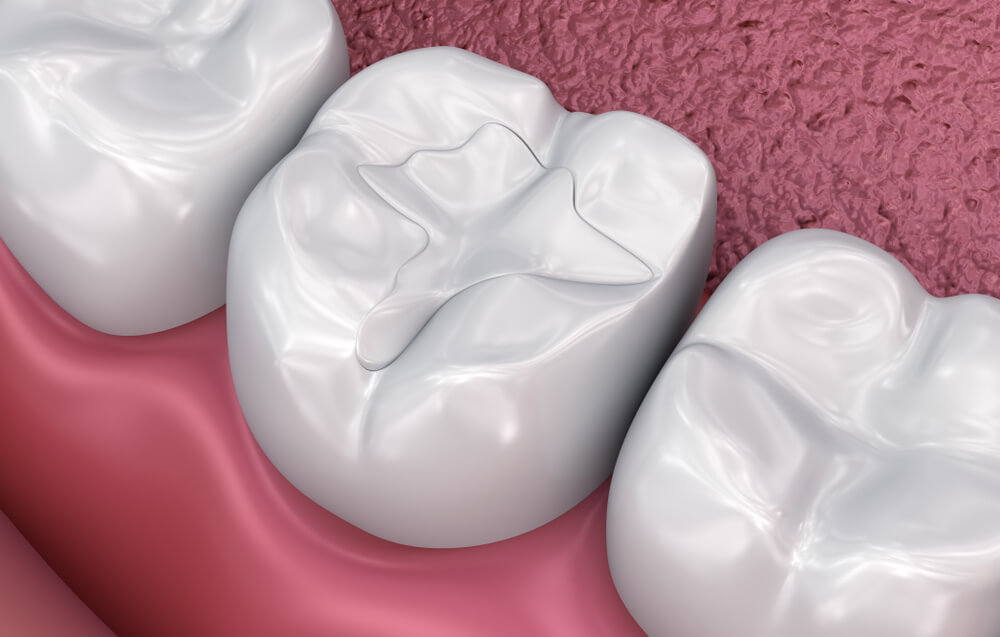What Is A Dental Filling?
A dental filling is a direct restoration used to repair a decayed or damaged tooth, and is often the first line of defense in a tooth that has been compromised. During this procedure, your dentist will use a local anesthetic to numb the area and begin by removing any decayed/structurally unsound portions of natural tooth. Once the tooth has been prepared the filling material can be placed.
How Are Dental Fillings Done?
After the tooth is prepared, the chosen material is applied, shaped and cured (hardened and set) to achieve the final restoration. Fillings range in price and appointment length depending on how large the area of decay is and how many surfaces of the tooth the filling covers.
What Is Dental Bonding?
Dental bonding is essentially the same process as a dental filling –material is used to fill in, build up or otherwise repair a natural tooth. While the term “filling” usually applies to repairing an area of decay, bonding is more commonly a cosmetic term. It describes any procedure where material is used to change the shape, color or other aesthetic aspects of the tooth. The material used is almost always composite resin, and many times no anesthesia is required. This is often the most economical choice when searching for a cosmetic improvement to one’s teeth.
What Should I Expect After Getting A Filling?
You can expect to be numb for a few hours following your procedure. Due to this numbness, drinking and eating may be difficult in the affected area. Avoid drinking anything very hot or chewing as you might hurt yourself without realizing it.
You may experience minor tooth sensitivity for up to 6 weeks after the treatment – this is a natural response from having work done, though not everyone experiences it. The gums surrounding the teeth may be sensitive for up to a week after the procedure as a result of tissue manipulation during the filling. If sensitivity is more than mild or persists beyond these timeframes, contact our office.
You may experience soreness when opening your mouth following the procedure – this is typically from holding your mouth open during the appointment and a warm compress afterwards should help alleviate any pain.
Once the numbness wears off, pay attention to your bite to make sure everything feels normal. You want to feel your teeth hitting on both sides simultaneously when you bite down. If this is not the case, or if you’re experiencing continued discomfort with chewing, go back to your dentist and they can do a quick adjustment.


